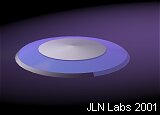

The
Enhanced T. Brown Electrokinetic experiment
Advanced Reduced Drag Aircraft project
By Jean-Louis Naudin
created on
September 22th, 2001 - JLN Labs
- Last update September 27th, 2001
All
informations in this page are published free and are intended for
private/educational purposes and not for commercial applications
In the Townsend
Brown Electrokinetic Apparatus described in the US Patent N°2949550 filed on Aug 16, 1960
and titled "Elektrokinetic Apparatus" we
can read :
<< It is therefore an object of my
invention to provide an apparatus for converting the energy of an
electrical potential directly into a mechanical force suitable
for causing relative motion between a structure and the
surrounding medium. It is another object of this invention to
provide a novel apparatus for converting and electrical potential
directly to usable kinetic energy.
It is another object of this invention to provide a novel
apparatus for converting electrostatic energy directly into
kinetic energy.
It is another object of this invention to provide a vehicle
motivated by electrostatic energy without the use of moving parts.
It is still another object of this invention to provide a self-
propelled vehicle without moving parts. It is a feature of my
invention to provide an apparatus for producing relative motion
between a structure and the surrounding medium which apparatus
includes a pair of electrodes of appropriate form held in fixed
spaced relation to each other and immersed in a dielectric medium
and oppositely charged. It is another feature of my invention to
provide apparatus which includes a body defining one electrode,
another separate electrode supported in fixed spaced relation by
said body, and a source of high electrical potential connected
between the body and the separate electrode. >> (
Extract from US Patent N°2949550 filed on Aug 16, 1960 titled
"Elektrokinetic Apparatus" )
Dr Mason Rose, one of Townsend's colleagues, described
the discs' principle of operation as follows:
<<The saucers made by Brown have no
propellers, no jets, no moving parts at all. They create a
modification of the gravitational field around themselves, which
is analogous to putting them on the incline of a hill. They act
like a surfboard on a wave....The electro-gravitational saucer
creates its own "hill", which is a local distortion of
the gravitational field, then it takes this "hill" with
it in any choosen direction and at any rate. The occupants of one
of Brown's saucers would feel no stress at all, no matter how
sharp the turn or how great the acceleration. This is because the
ship and the occupants and the load are responding equally to the
wave like distortion of the local gravitational field....>>.
Ref document : Rose M. "The flying saucer : The application
of the Biefeld-Brown effect to the solution of the problems of
space navigation." University for Social Research, April 8,
1952
"Brown's experiment had launched a new field of investigation which came to be known as electrogravtics, the technology of controling gravity through the use of high-voltage electric charge. Ref document and suggested book : "Electrogravitics Systems" ( Report on a new propulsion methodology) by Thomas Valone - ISBN 0-9641070-0-7
________________________
The Biefeld-Brown Effect is fully used in the ARDA Project ( Advanced Reduced Drag Aircraft ) and the purpose of this experiment is to build an enhanced version of the Townsend Brown Electrokinetic device described in his patent. So, I have improved the basic version of the T.T. Brown experiment already conducted in 1997 ( see : ttbelkin.htm )
The major improvements done in this new design are :
The thin wire used in the original T.T.Brown design placed in front of the leading edge of the wing has been removed to reduce the parasitic ion wind,
this thin wire is now replaced by a larger electrode and embedded in the leading edge of the wing,
the surface of the main conductive layer has been reduced,
the main conductive layer is only placed on the upper surface ( the extrados for a wing ),
the wing is built with a non conductive material ( with a good dielectric constant ).
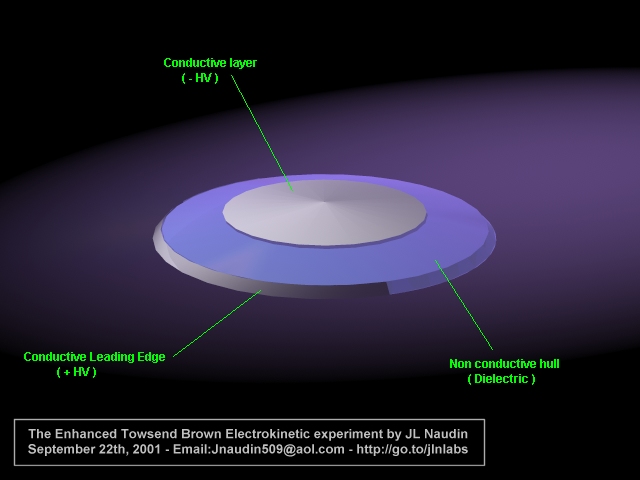
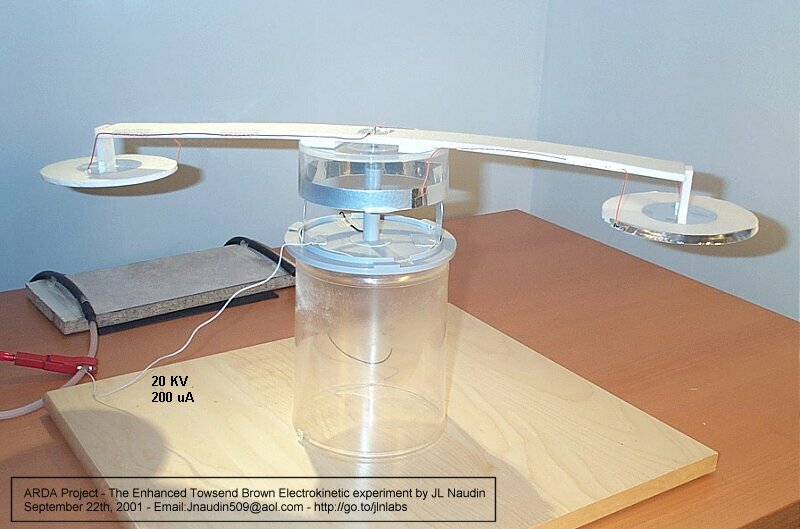

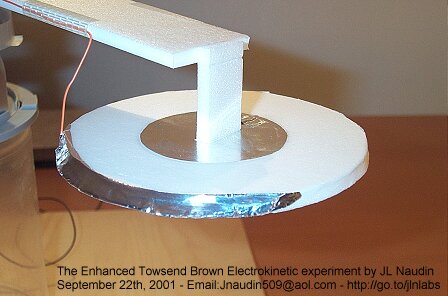
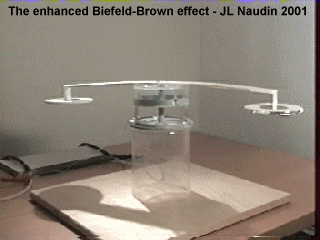
Tests results
: This new design is more efficient, for
the same resulting thrust. With this design the voltage and the
current used are lower than in the original T.T. Brown design.
Enhanced T.T. Brown design : Voltage = 20KV at 200uA,
Original T.T.Brown design : Voltage = 30KV at 300uA.
See the video of Enhanced T. Brown Electrokinetic experiment
To see the videos, the free
downloadable RealPlayer is required ![]()
Click on the picture above to see the video ( 607 Kb )
Documents references :
"Electrogravitics Systems" ( Report on a new propulsion methodology) by Thomas Valone - ISBN 0-9641070-0-7
" Subquantum Kinetics " by Paul A. LaViolette - ISBN 0-9642025-0-6
" L'Effet Biefeld-Brown - Histoire secrète de l'antigravité - Vol 1 "by Alexandre Szames - ISBN 2-91377-01-7
Electrokinetics brown by Paul E. Potter
US Patent N°2949550 filed on Aug 16, 1960 "Elektrokinetic Apparatus" from Thomas Townsend Brown
The Thomas Townsend Brown dedicated web site
US Patent N°3446464: Method and apparatus for reducing sonic waves and aerodynamic drag from William A.Donald, May 27, 1969
| US6247671: Ion
doping apparatus and method for aerodynamic flow
control http://l2.espacenet.com/dips/viewer?PN=US6247671&CY=ch&LG=fr&DB=EPD
Abstract : Method and apparatus for impingement on the sonic wave produced by a supersonic gas flow and the gas flow in a boundary layer of a gas that interfaces with a solid substrate comprising providing a source of a mixture of ions and electrons, introducing said ions and electrons into the region behind the sonic wave and ahead of the boundary layer, separating said ions and said electrons in said region maintaining a substantial portion of said ions proximate said region and maintaining a substantial portion of said electrons remote from said region. |
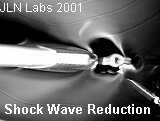 The Northrop Shock Wave
Reduction experiment
The Northrop Shock Wave
Reduction experiment
![]() Email : JNaudin509@aol.com
Email : JNaudin509@aol.com
Return to the Advanced Propulsions Researches page